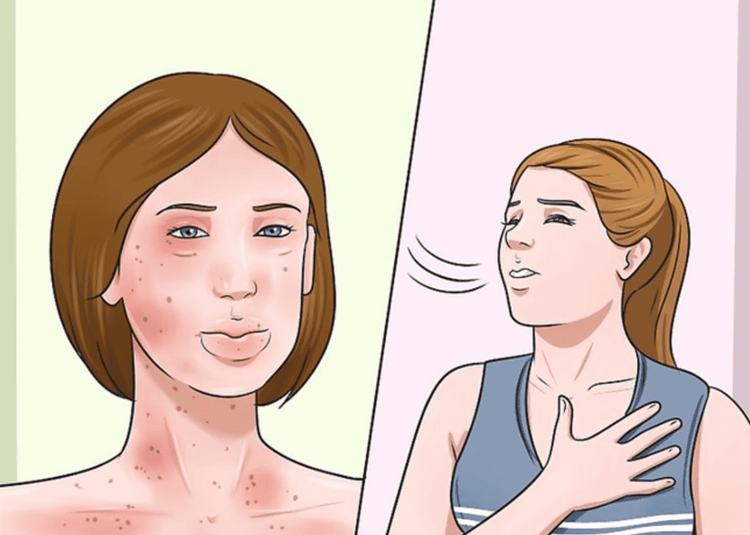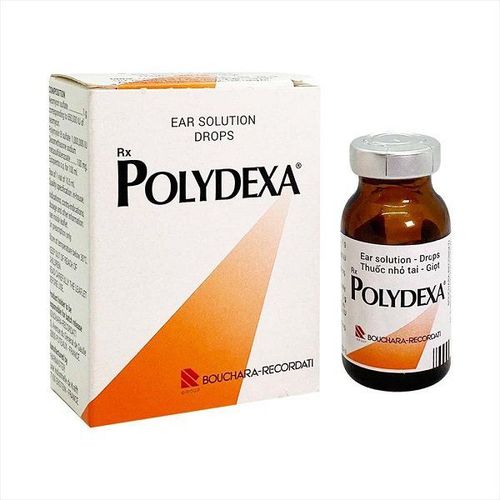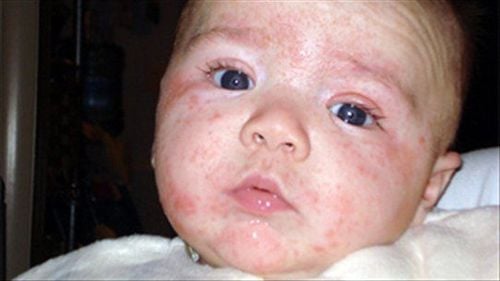This is an automatically translated article.
The article was professionally consulted by Pharmacist Nguyen Thi Linh - Vinmec Danang International General Hospital.An antibiotic allergy is considered a harmful reaction to the body. Allergic reactions can occur soon after a patient has taken antibiotics or from days to weeks after taking them.
1. What is an antibiotic allergy?
Antibiotics are antibacterial substances, prepared from strains of microorganisms, including fungi, bacteria, and actinomycetes. In medicine, antibiotics are often used to control and prevent the growth of pathogenic microorganisms, and to fight infections - one of the diseases with the leading mortality rate. in developing countries, including Vietnam.Some cases of antibiotic use may bring the risk of an allergic reaction. Allergic reactions can occur soon after a patient has taken antibiotics or from days to weeks after taking them. An antibiotic allergy may not appear during the first use of the drug, but the immune system is already starting to be more sensitive to the antibiotic. This puts the patient at high risk of having an allergic reaction the next time the drug is used.
Allergic reactions occur through immune mediators. IgE-specific antibodies mediate an immediate hypersensitivity reaction. Meanwhile, T cells or non-IgE mediators contribute to the late hypersensitivity response.
2. Subjects at high risk of antibiotic allergy
Below are some subjects in the high-risk group for antibiotic allergies, including:People with a family history of antibiotic allergies People who arbitrarily use drugs without a doctor's prescription are suffering from other allergic conditions, such as pollen or animal dander The person has used expired antibiotics or has changed their shape or color. People with chronic illnesses (such as pneumonia, pharyngitis, bronchitis, rheumatism, or neurological disease) make the body's immune system weaker and more sensitive.

Tự ý dùng kháng sinh thường xuyên làm gia tăng nguy cơ cao bị dị ứng kháng sinh
3. Signs and symptoms of antibiotic allergy
Some of the most common signs and symptoms of an antibiotic allergy are:Rash, red, itchy, swollen, or flaky skin A tight throat, difficulty breathing or wheezing Abdominal pain, diarrhea Watery eyes or nose Vision problems More dangerously, you can go into anaphylaxis when you're allergic to antibiotics. This is a sudden, rapid reaction and can be fatal if not treated promptly. Common symptoms of anaphylaxis include:
Difficulty breathing Chest tightness Convulsions Nausea or vomiting Swollen tongue and throat Dizziness Delirium, fainting These allergic reactions usually appear after a few days minutes to an hour, some reactions as late as several days after antibiotic use. If you notice any of the symptoms listed above, you should stop using the drug and notify your doctor immediately to control the allergic condition in time.
4. Diagnosis of antibiotic allergy
To determine if a patient has an antibiotic allergy, the doctor will first ask the patient to provide the following information:Recently used antibiotics? What antibiotics did the patient take before the allergic reaction occurred? Does the patient have a history of antibiotic allergy? Does the patient have other health problems? After examining the overall health, the doctor will ask the patient to perform additional tests to ensure the accuracy of the diagnosis. The tests given will depend on the condition of each person. Here are some commonly used diagnostic tests for antibiotic allergy, including:
Blood tests : a doctor will take a blood sample from a patient's vein or arm, and then send it to a laboratory for diagnosis. Skin prick test: The doctor will inject a small amount of antibiotic into the patient's arm and monitor the reactions that follow. Dermatitis test: the doctor will put a small amount of antibiotic on the patient's skin, then use an oral patch to cover the area of the skin to be tested and keep for 2 days. The doctor will base on the allergic reactions that appear on the skin to make accurate conclusions.

Dấu hiệu dị ứng kháng sinh
5. What should I do when I have an antibiotic allergy?
The first and most important thing when you experience an allergic reaction to an antibiotic is to stop using it immediately. As a next step, you may choose to treat your allergy symptoms with medication, including an antihistamine (astemizol, cetirizine, fexofenadine, loratadine), or an anti-inflammatory corticosteroid (methylprednisolone, prednisolone). When using these drugs, you need to strictly follow the dosage prescribed by your doctor, in order to achieve the best treatment effect. In certain cases, rehydration or electrolyte replacement is recommended for patients with antibiotic allergy.For people who have anaphylaxis or other dangerous allergic reactions that need to be handled promptly. An auto-injector of epinephrine will be very helpful in this emergency situation. The patient needs to be injected immediately and then taken to the hospital for emergency treatment before the allergy becomes more serious.
In addition, patients should also consult with their doctor to choose an alternative antibiotic that is appropriate and does not pose a risk of causing cross-reactivity with older drugs.
6. Ways to prevent antibiotic allergy
To effectively prevent antibiotic allergy, you need to note the following:Do not arbitrarily use drugs Should check the origin, composition and quality of the drug before use Prepare tools anti-shock, always carry an epinephrine injector pen for timely handling of emergencies. Notify your doctor immediately when an allergic reaction occurs

Khi bị dị ứng kháng sinh bạn nên hỏi ý kiến bác sĩ để có liệu trình sử dụng thuốc hợp lý
Please dial HOTLINE for more information or register for an appointment HERE. Download MyVinmec app to make appointments faster and to manage your bookings easily.
Reference source: Cdc.gov












